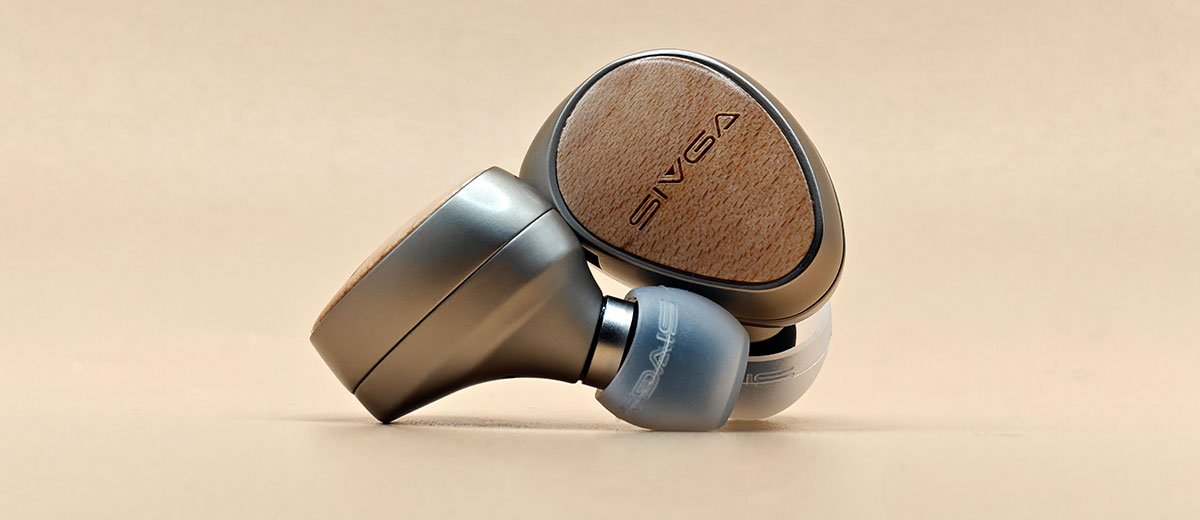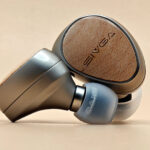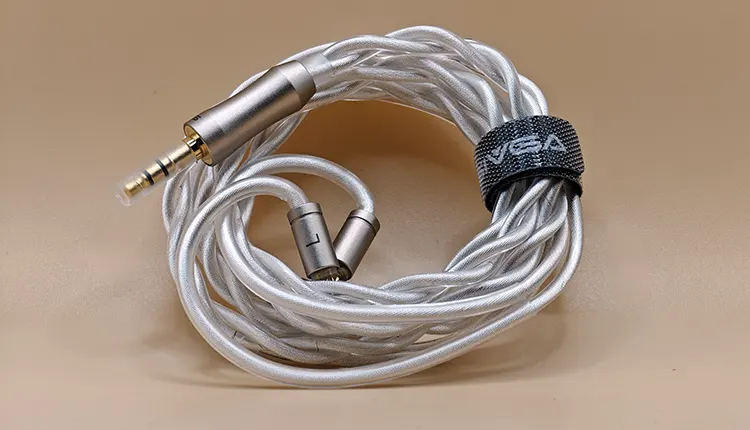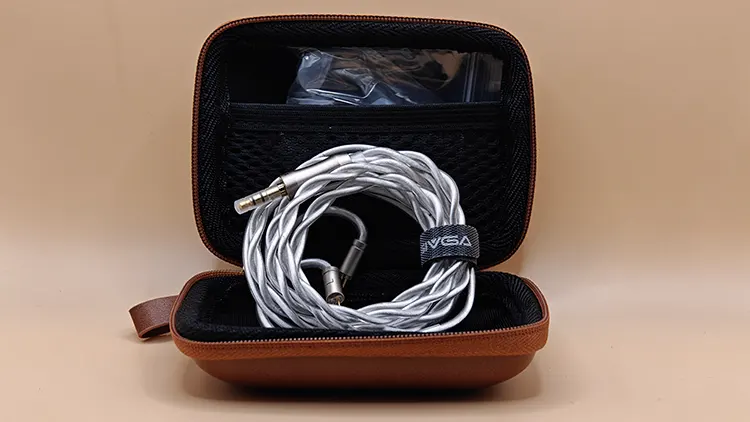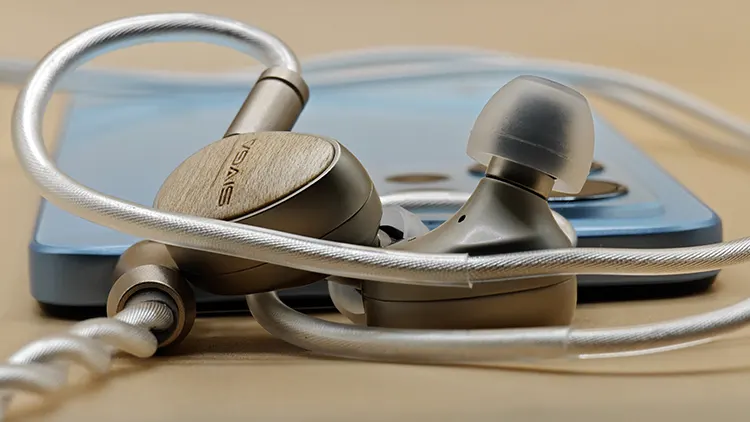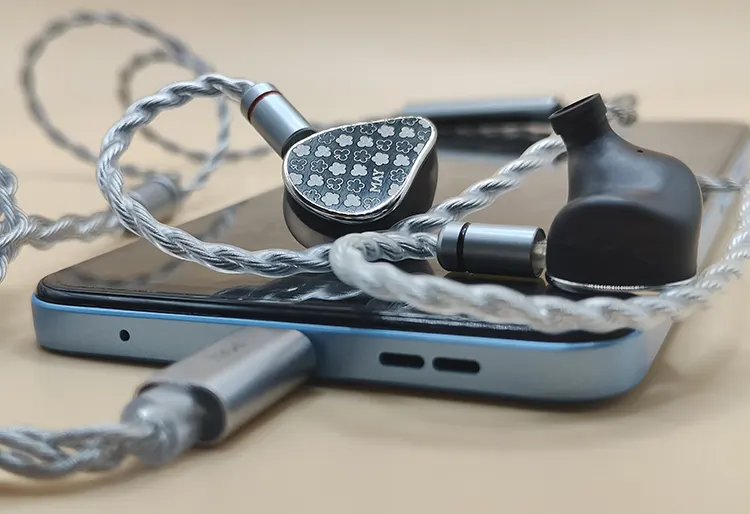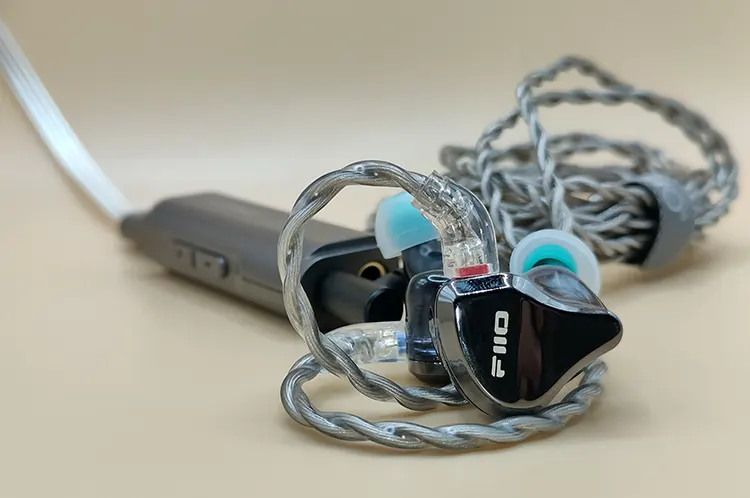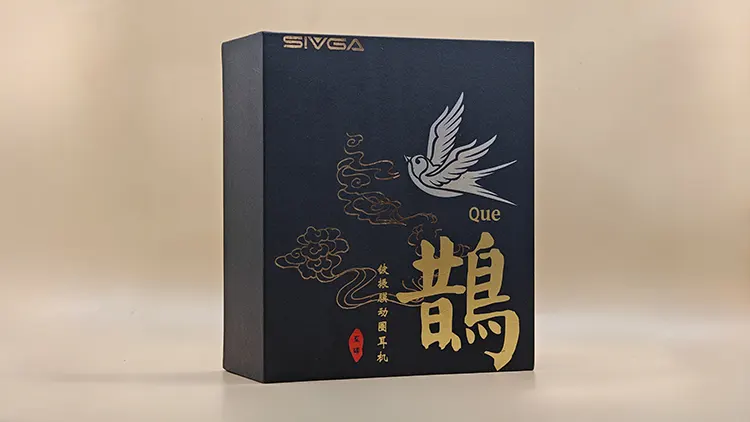In today’s article, Kurt reviews the SIVGA Que, a new and affordable entry-level 10mm beryllium-plated diaphragm dynamic driver in-ear monitor. It is priced at $69.99.
Disclaimer: This sample was sent to me in exchange for my honest opinion. Headfonics is an independent website with no affiliate links or status. I thank SIVGA for their support.
Click here to learn more about SIVGA products previously reviewed on Headfonics.
Note that this article follows our latest scoring guidelines which you can read in more detail here.
The SIVGA Cue is a new entry-level single dynamic driver IEM priced at $69.99 and positioned below their popular single planar driver Nightingale monitor.
Despite its modest pricing point, it comes with a striking wooden faceplate, a new design, and a new driver design.
The Que should appeal to fans of a warmer and bassier sound signature this time around but just how distinct it is from competing sub-$100 models such as the MOONDROP MAY and FiiO’s JH5?
You can find out how it performs and fares against the competition in more detail in my full review below.
Features
The SIVGA Que universal IEM uses a single 10mm dynamic driver with a beryllium-plated diaphragm and a single magnet within a dual-cavity acoustic chamber structure.
The Que is rated at 32 ohm impedance with a sensitivity of 108 dB/mW @1kHz so while not super sensitive it should be quite easy to drive from a wide range of sources.
Design
The SIVGA Que has a unique aesthetic to its design. People familiar with SIVGA headphones will definitely see their signature look with it.
Starting with its faceplate, it’s made out of white American maple wood with the SIVGA name carved on top It’s smooth and quite silky to the touch. I can feel the extra work put into this design from it.
I haven’t seen wooden faceplates since the custom MOONDROP Blessing 2 series. Those IEMs had issues of faceplates falling off, so I hope the long-term stability of the SIVGA Que plates is better.
The shell is a zinc-alloy finish and split in half, with one side connected to the faceplate while the other is the main chamber.
There are also 2 vents and left-right labels on the chamber side. These chambers alleviate ear pressure while the left-right labels prevent cable connection confusion.
Comfort & Isolation
The SIVGA Que has a unique shape. It’s tall but narrow, which isn’t something I normally see.
The IEM shapes I’ve commonly seen are thick in width but smaller in height. The SIVGA Que’s 1 dynamic driver acoustical chamber design could be why it has this shape.
Wearing it, due to its narrowness, it has a strange fit, or what I might define as a Schrodinger’s fit. It goes in my ear well, but it feels like it’ll fall out anytime. It doesn’t feel secure since it’s half the width of what I’m normally used to in my ears.
The good thing is that I never felt ear discomfort with prolonged usage. Its width also made it the ideal sleeping IEM for me. However, its isolation isn’t a strong point. The smaller diameter prevents proper sound isolation from the outside.
Ear Tips
The SIVGA Que has 2 sets of silicone tips. They’re not the usual silicone tips rather they’re improved ones.
The first set is clear with a white stem. The stem here is short while the tip itself is larger and more spread out. The second set is clear as well but has a black stem. Its stem is longer while being more pointed and stiffer in shape.
The one with the white stem is closer to a wide-bore tip, which would elevate the treble. Meanwhile, the one with the black step is closer to a narrow bore that focuses on bass tightness.
Stock Cable
SIVGA also gave the cable a lot of thought as it feels and looks like a premium cable.
SIVGA paired it up with a 2-strand high-purity silver-plated cable. It’s on the heavier side but it’s sincerely well built.
It’s not modular and only a 3.5mm version is available. However, I didn’t feel the need to use 4.4mm or 2.5mm balanced to power it.
The 3.5mm end and chin slider seem to be using the same metal alloy as the shell. There is a slight difference in it being more polished which gives it a glossier appearance.
Packaging & Accessories
The SIVGA Que comes in a medium-sized box with a bird on the front and details about the IEM on the back. It’s a conservative black color all around. Even after opening it, there is very little color to be seen aside from black.
Inside the box, there’s the IEM, cable, silicone tips, and a carrying case. This carrying case is the only colorful thing in the package.
It’s all brown, a lustrous brown actually, and it seems like it’s made out of vegan leather. A strap holder is dangling but it’s held by a gold-painted ring. Inside, there’s a net pouch to put your dongles, tips, and other stuff. I was able to fit a dongle, 2 tips, and the SIVGA Que in it with no problems.
Sound Impressions
Bass
The bass of the SIVGA Que is at basshead level. For a single dynamic driver IEM, it sounds maxed out to its potential on the lows.
There’s no lack of bass potency here and I can strongly feel the bass throughout my ears. The bass rumble and sense of punch are great and didn’t feel muddy despite its warmth nor did it mess up the separation of instruments.
Surprisingly, there’s good bass detail and texture here. It’s detailed enough that I could only get better bass microdetails in more premium IEMs.
However, I did have an issue with music that wasn’t that bassy sounding unnaturally bloated. I prefer keeping the music sounding as originally intended.
Mids
The SIVGA Que has some enjoyable mids. It doesn’t get too bright or lacks note weight. However, the timbre is quite warm. I got hit by that warmth the moment I tried it.
I prefer a neutral tuning with some brightness because I like clean mids with little to zero warmth. Fortunately, despite the SIVGA Que having a lot of bass and warmth, it was never muddy.
Vocals have thick and heavy note weights. It never sounded thin or analytic, which is a good start for chilled and laid-back listening sessions. Fortunately, the instrumental and vocal timbre lacks over-sharpening or honkiness to their tone.
Treble
The treble isn’t the strong part of the SIVGA Que. It performs as I expect from a dynamic driver but the upside is that it never underperforms.
Sibilance concerns are non-existent with the SIVGA Que. Even with sibilant tracks, I could listen to them without worrying about hurtful ‘s’ or popping sounds.
Unfortunately, detail retrieval isn’t anything impressive. The SIVGA Que is okay here but nothing to wow someone over. I can get more presence and headroom if I switch to a planar IEM from the SIVGA Que. It’s a noticeable difference sadly.
Staging & Dynamics
The staging of the SIVGA Que is still within headspace. In other words, it gives an average staging experience.
Even with its imaging, it doesn’t have stages to it. All instruments seem to be placed in one spot rather than being spread out at varying levels.
Everything sounds cramped. It doesn’t have bad separation though, but this area could be better.
For its dynamics, even though it’s a bass-centric IEM, it didn’t overshadow other parts of the music. The vocals and instruments still shine through fine. Nothing was overly too loud or too soft and everything sounded balanced equalization-wise.
Synergy
The SIVGA Que has an impedance rating of 32Ω and a sensitivity of 108 dB/mW.
I could run this out of any device with no problem. I didn’t need any 4.4mm or 2.5mm balanced cables to power this as well. Any phone with a 3.5mm headphone jack will power this easily. With around 50% power, I was getting sufficient loudness from it.
Any dongle, DAC-amp, and stationary amplifier will power the SIVGA Que with ease. Loudness is the least of your concerns here.
I’ve tried the FiiO JA11 and KA11 dongles to test portable usage conditions and found I could put my device at 40% volume here to achieve the desired loudness levels.
Using a brighter DAC-amp like the MOONDROP Dawn Pro, makes the vocals sound cleaner and more forward in their positioning. People wanting more brightness from the SIVGA Que should consider this if they don’t have a DAC-amp.
Using a more neutral DAC-amp like the Colorfly CDA-M2, an increased clarity is audible. I prefer using neutral sources due to the increased clarity while keeping the tuning the same.
Select Comparisons
MOONDROP MAY
Technical
The MOONDROP MAY is a unique hybrid IEM. It uses 1 dynamic driver and 1 planar driver which isn’t normally seen.
The dynamic driver is a sapphire full-frequency dynamic driver. This is a newly developed sapphire-evaporation diaphragm that hasn’t been used. The driver is a 6mm annular planar driver. This handles the MOONDROP MAY’s treble and other upper frequencies.
Design
The MOONDROP MAY has a clover pattern design on its faceplate. It’s lustrous to look at while smooth to the touch.
The shell is fully black but with an opaque quality. The drivers can be seen under an ample amount of light. There are 2 vents on the shell. One vent is near the nozzle while the other one is at the corner tip.
Performance
The MOONDROP MAY gives me stronger bass with more potency here compared to the SIVGA Que.
Although the MOONDROP MAY has stronger bass, it is far muddier sounding. Cleanliness becomes an issue that the SIVGA Que doesn’t suffer from.
Their mids are quite similar though. Both their dynamic drivers still handle this part as well. I had no problems with the note weight or potential thinness of the vocals. Both of them handled it well.
Their differences appear in the treble with the MOONDROP MAY’s planar driver handling this area.
Surprisingly, the detail retrieval of the MOONDROP MAY is only slightly better. The SIVGA Que still competes with it for good sibilance control. The MOONDROP MAY has more issues with sibilance and artificial-sounding instruments.
Staging and imaging are slightly better on the MOONDROP MAY though. Its planar driver handling gives it the edge compared to the SIVGA Que.
FiiO JH5
Technical
The FiiO JH5 is a hybrid IEM. It has one dynamic driver and four balanced armatures. This is a setup you normally see in more expensive sets.
The dynamic driver focuses on the bass and the four other balanced armatures are used for the mids and treble. Its dynamic driver is a 10mm driver with custom-made balanced armatures using a three-way crossover.
Design
The FiiO JH5 has a shiny faceplate with the FiiO name printed on it. There’s also a vent grill on top near the 0.78mm connectors.
The shell shape is similar to a CIEM style. It has more curves and edges that might not fit everyone. For its colors, it’s all black all around while the shell is more translucent this time. Fortunately, there is a white color for the FiiO JH5.
Performance
The FiiO JH5 has a slightly more powerful bass in exchange for thinness in the upper midrange. The SIVGA Que keeps things more equal in comparison.
The midrange of the SIVGA Que has better timbre and tonality. The FiiO JH5 has thinner vocals while having a BA timbre to it.
The treble is inconsistent with the FiiO JH5. The SIVGA Que has a smoother and more consistent tuning to its treble making it sound more coherent than the FiiO JH5. Music feels more unified here unlike the weird separation of the FiiO JH5.
Their staging and imaging are surprisingly matched with both offering the same depth and width for the staging while having average imaging.
My Verdict
The SIVGA Que is a competitive single dynamic driver universal IEM for the entry-level or budget market. Its warm and bassy tuning is a breath of fresh air in this current climate of neutral to bright sound signatures.
The non-fatiguing and enjoyable sound of the SIVGA Que makes it relatively unique compared to its competitors. Call this one a chill-out IEM if you will.
SIVGA Que Technical Specifications
- Driver Type: One (1x) dynamic driver
- Plug: 3.5mm. 0.78mm termination
- Frequency Response: 20Hz – 20kHz
- Impedance: 32@1kHz
- Sensitivity: 108db/Vrms

